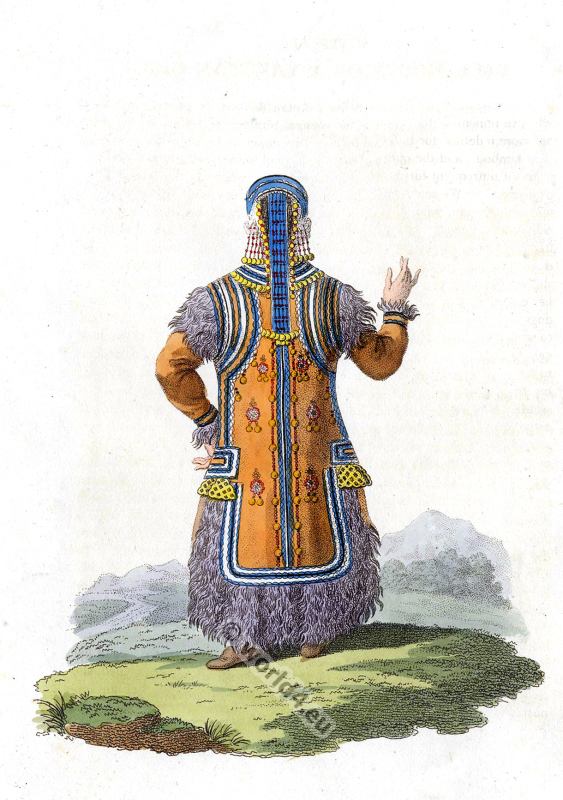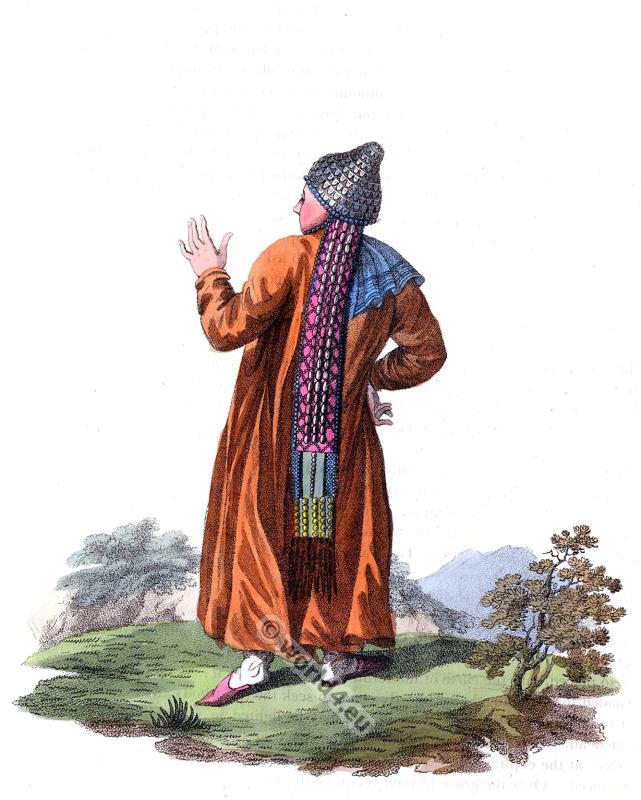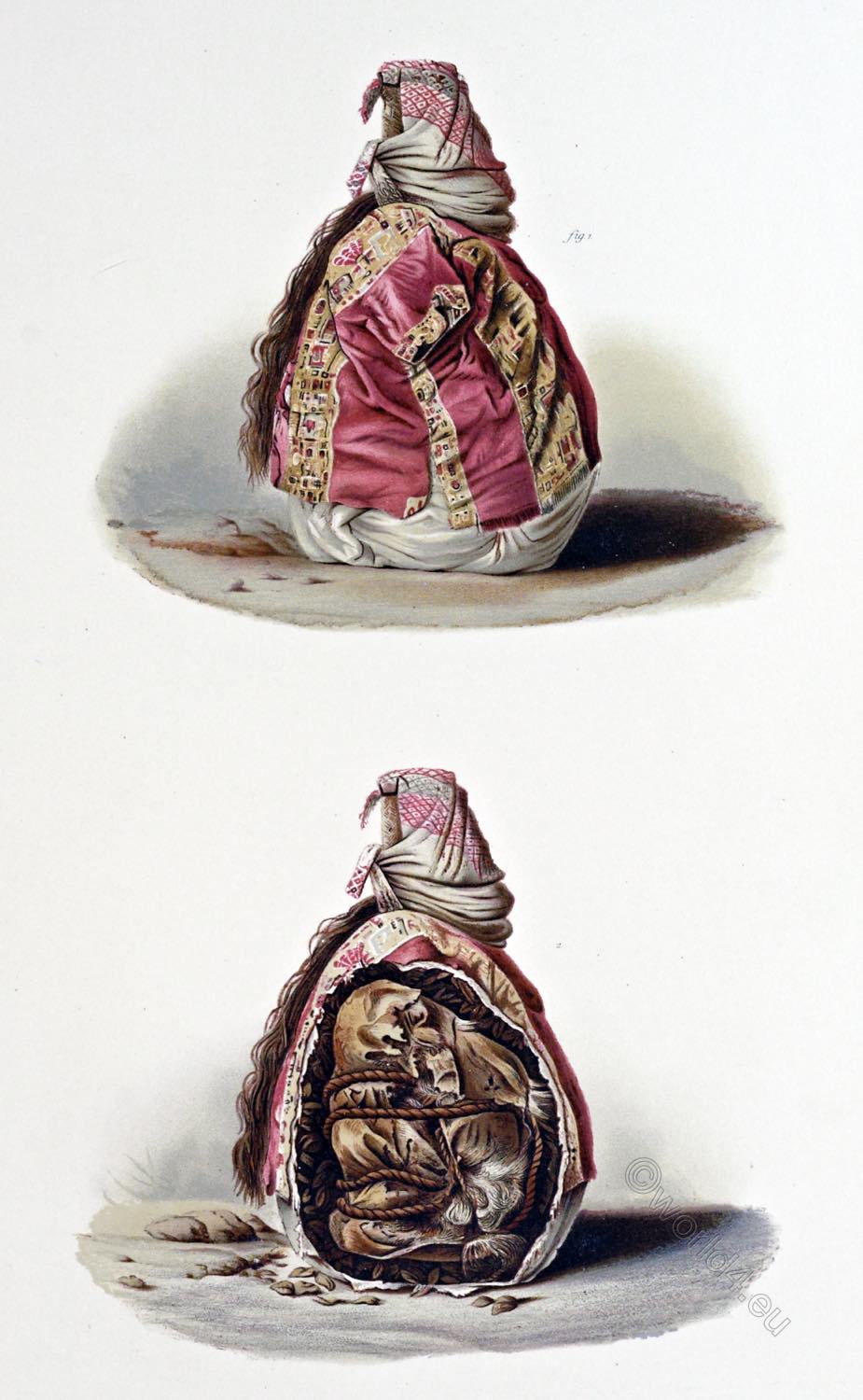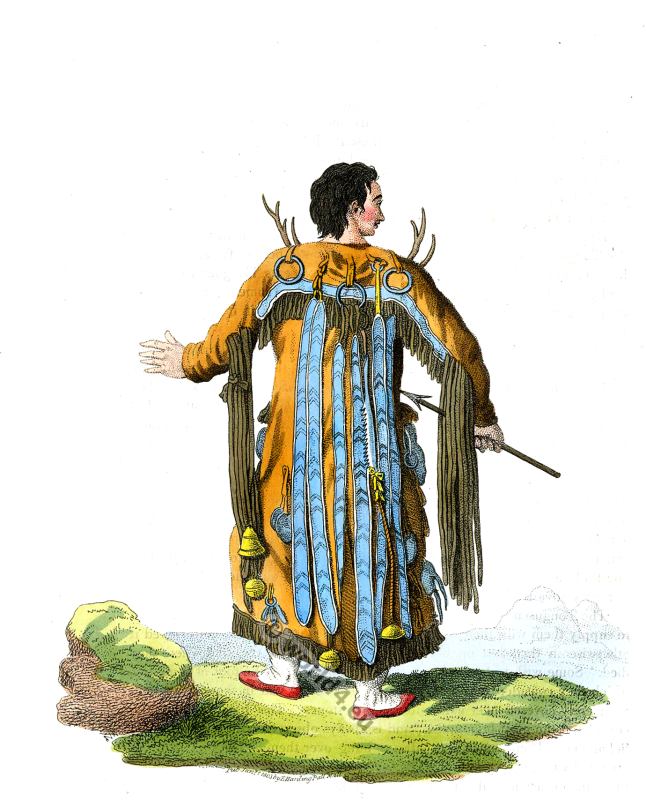
III. The Mummies in their diverse equipment.
a. False-headed Mummies.
FRONT AND BACK VIEW OF THE FALSE HEAD OF THE MUMMY FIGURED ON PLATE 11.
PLATE 12.
To the unusual proportions of the mummy pack corresponds also the false head attached to it, front and back views of which are figured both covered and uncovered on the present Plate. It consists of a square kind of cushion or pillow stuffed with leaves and seaweed, and fastened to the pack with long stitches. False heads variously dressed are shown on Plate 21.
Fig. 1. gives the back of the head in the covering found in the grave, corresponding to the front view figured on Plate 11. The cotton wrapper is fastened with a fillet and the reed string wound round the neck. A small gourd flask is attached with a thin cord.
Fig. 2. Shows the face of the uncovered head. The compexion is imitated with ochre painting; the eyes are cut out of white bark and stitched on, two drops of black resin representing the pupils; the nose is carved in wood; white cotton threads indicate the lips; and the hair enframing the face consists of aloe fibres dyed black. These are fastened with two bandages, of which the upper, striped in bright colours, conceals the underlying band which is made of a simple cotton strip. To prevent the head from being tied up shapelessly by these bandages, a stick has been placed on the cushion. From the straight forehead thus formed there project as ornaments four double crosses, each two of uniform colour (see Plate 32).
Fig. 3. Back view of the uncovered head, showing how the bandages and double crosses are fastened. As appears from Fig. I the latter, when the mummy was brought to light, had been shoved under by the cloth serving as an outer wrapper, and thus got squeezed. The fine cordage drawn athwart the back of the cushion representing the head, gives support to the pillow, and thereby serves con- siderably to strengthen the head. False heads of small size are seldom stitched over this way.
Source: The necropolis of Ancon in Peru: a contribution to our knowledge of the culture and industries of the empire of the Incas being the results of excavations made on the spot by Wilhelm Reiss (1838-1908); Alphons Stübel (1835-1904), joint author; Wilhelm Greve, lithographer; Augustus Henry Keane (1833-1912), translator; Ludwig Wittmack (1839-1929); Rudolf Virchow (1821-1902); Alfred Nehring (1845-1904). Berlin: A. Asher & Co.; New York : Sole agent for America, Dodd, Mead & Company, 755 Broadway, 1880.
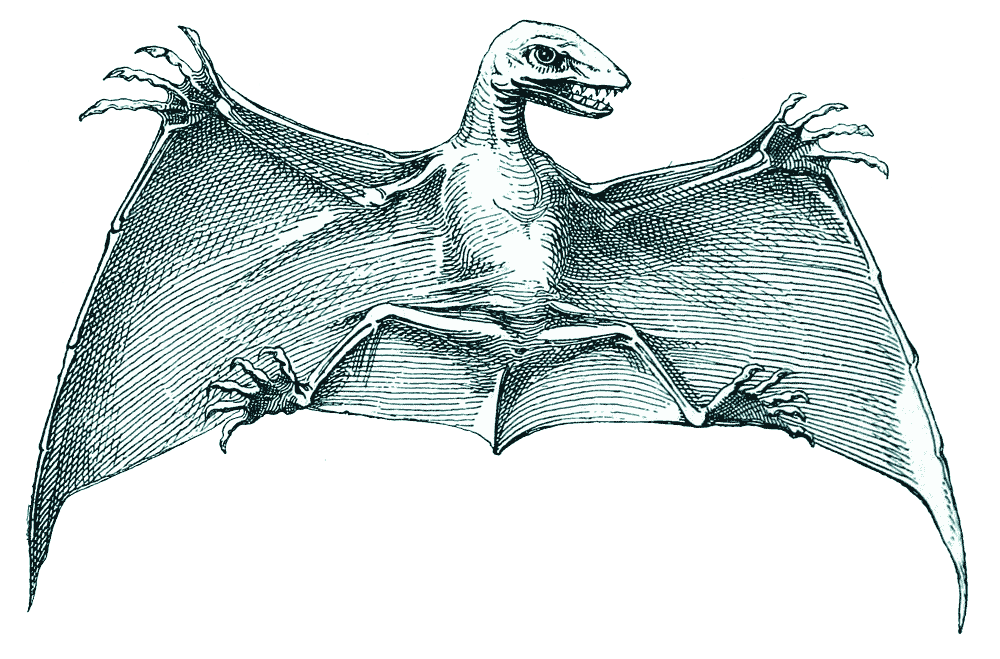
Discover more from World4 Costume Culture History
Subscribe to get the latest posts sent to your email.


